Seasonal decorating transforms your living space throughout the year without requiring major renovations or expensive purchases. Small, intentional changes like swapping colors, updating textiles, and incorporating natural elements can make your home feel fresh and aligned with each season’s unique character. This approach keeps your space dynamic while maintaining your personal style.
The key to successful seasonal decorating lies in creating a flexible foundation that adapts easily to different times of year. You can achieve this by investing in neutral base pieces and rotating accent items like throw pillows, artwork, and decorative objects. This strategy maximizes your decorating budget while minimizing storage needs.
Whether you prefer subtle shifts or bold seasonal statements, the right approach depends on your lifestyle and preferences. Smart seasonal decorating considers factors like natural lighting changes, comfort needs, and the psychological effects of different colors and textures throughout the year.
Key Takeaways
- Strategic color and texture changes create seasonal atmosphere without major expense or effort
- Natural elements and flexible base pieces form the foundation of effective year-round decorating
- Proper planning and storage systems enable smooth transitions between seasonal looks
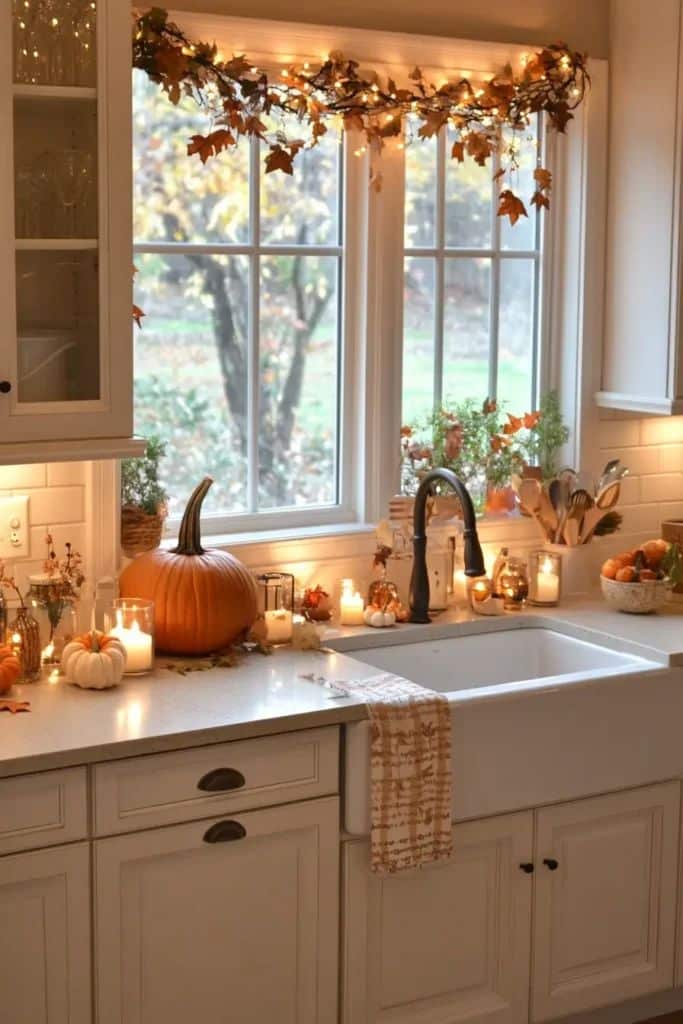
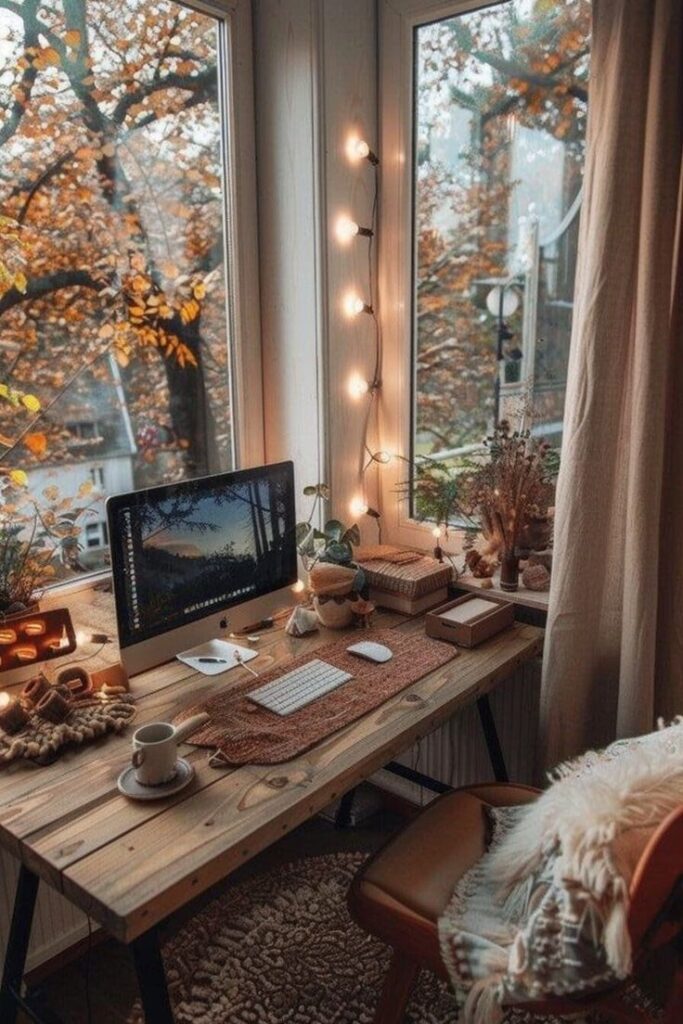
Essential Principles for Seasonal Home Decor
Building a foundation with neutral elements and versatile pieces creates the perfect canvas for seasonal transformations. Strategic layering and minimalist approaches allow you to refresh your space efficiently throughout the year.
Start with a Neutral Base
Your walls, large furniture pieces, and flooring should remain consistent across all seasons. Choose whites, grays, beiges, or soft earth tones as your foundation colors.
This neutral backdrop allows seasonal accents to shine without competing for attention. When you introduce autumn oranges or spring greens, they pop against neutral walls rather than clashing with bold permanent colors.
Invest in quality neutral furniture like cream sofas, natural wood dining tables, or gray area rugs. These pieces work in any season and won’t date quickly.
Key neutral base elements:
- Wall paint in warm white or light gray
- Upholstered furniture in beige, cream, or soft gray
- Natural wood finishes
- Neutral window treatments
Your neutral base reduces the need for major purchases when seasons change. You simply swap accessories rather than replacing expensive furniture pieces.
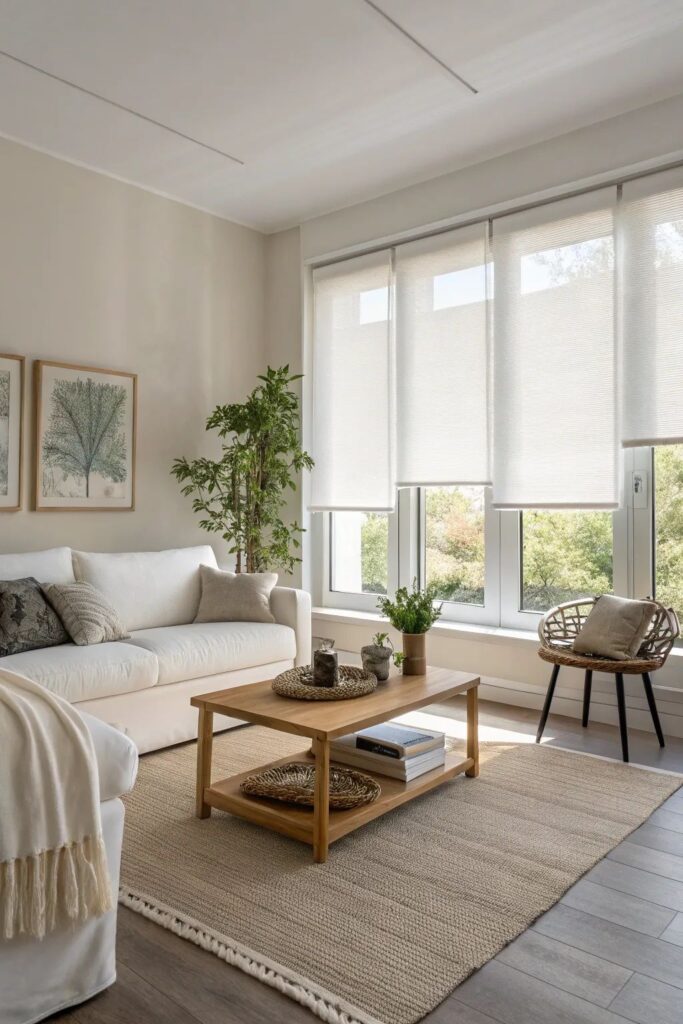
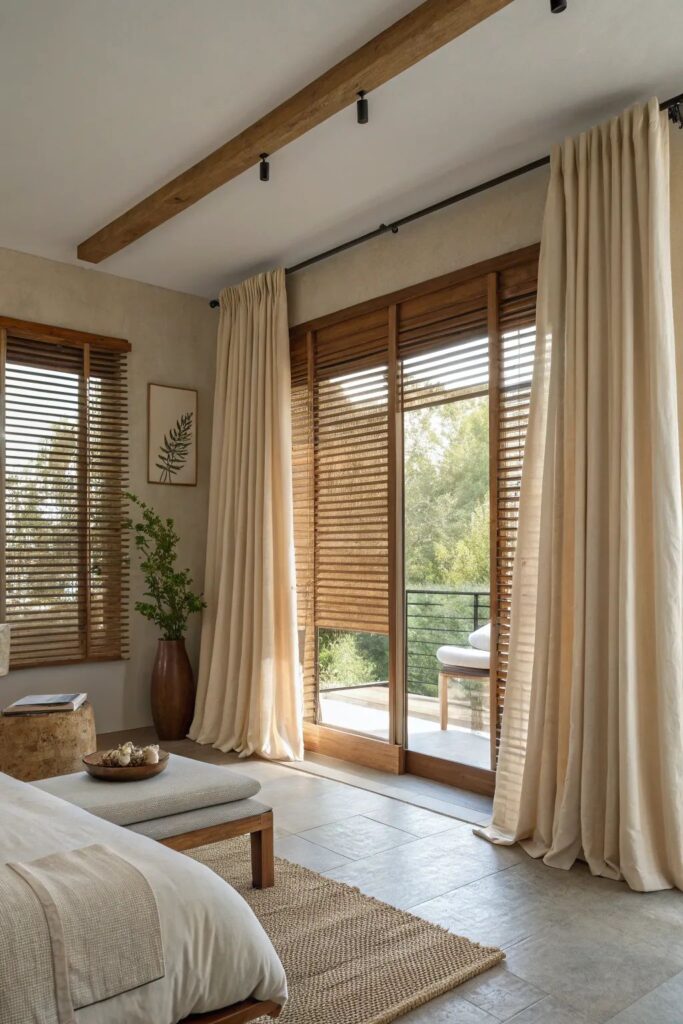
Choose Versatile Core Pieces
Select home décor items that transition between multiple seasons with minor adjustments. A wooden bowl works for fall pumpkins, winter pinecones, or spring flowers.
Multi-season décor pieces include:
- Glass vases and ceramic bowls
- Natural fiber baskets
- Wooden trays and cutting boards
- Metal lanterns and candlesticks
- Neutral throw pillows
Mirrors with simple frames complement any seasonal theme. They reflect natural light and make spaces feel larger regardless of the time of year.
Choose artwork with neutral or nature-inspired themes. Botanical prints, landscape photography, or abstract pieces in muted tones work year-round.
Storage furniture like ottomans or benches serves dual purposes. They provide functionality while offering surfaces for seasonal displays.
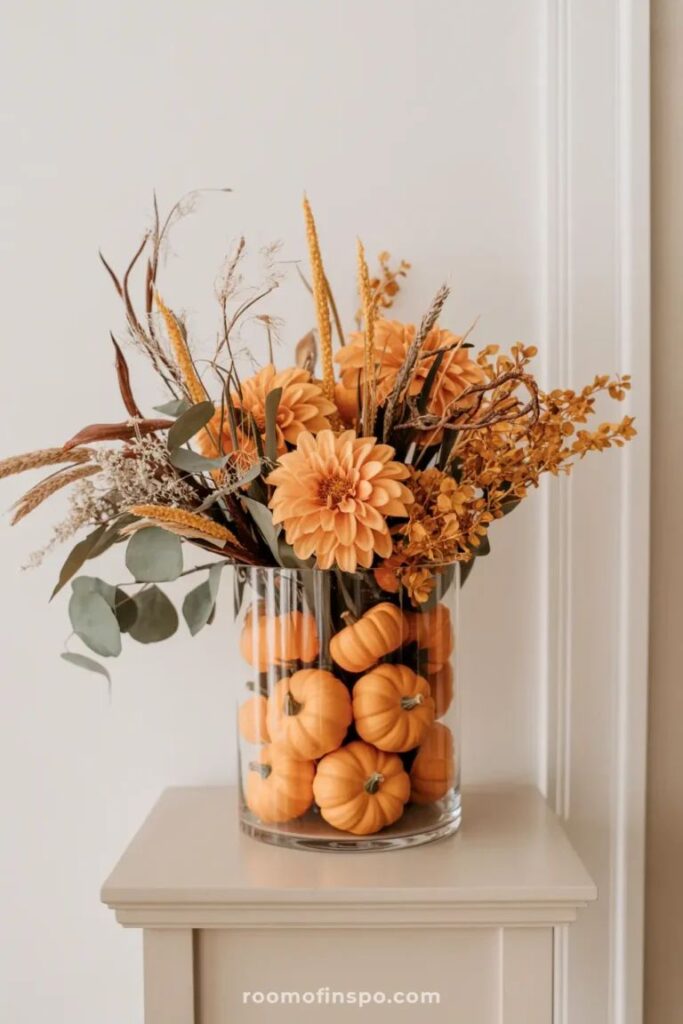
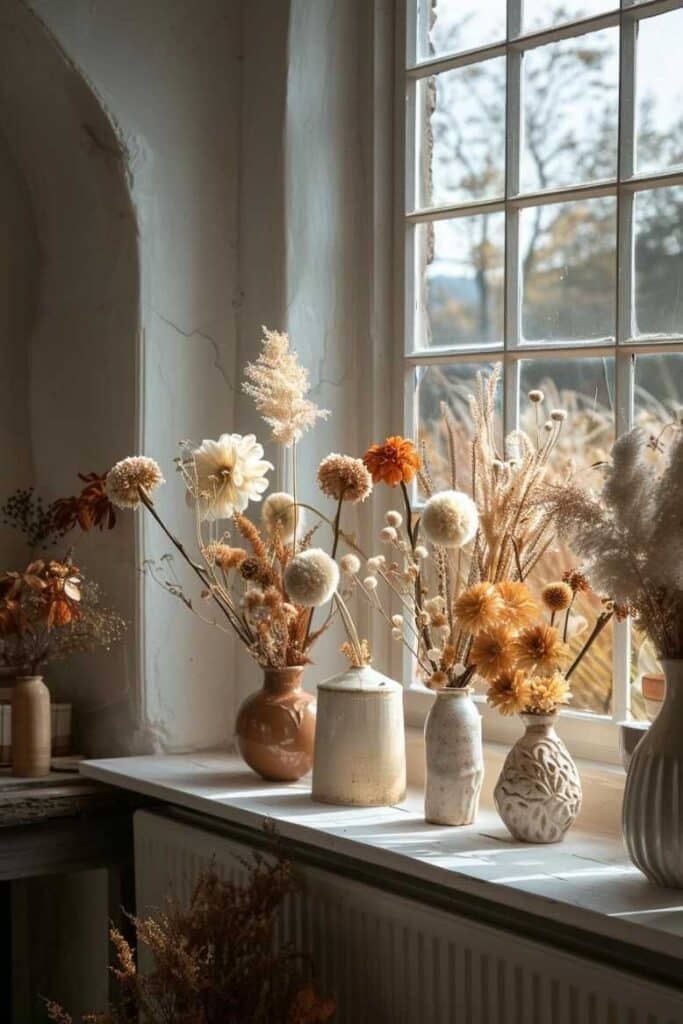
Layer Textures for Depth
Layer textures strategically to create visual interest without overwhelming your space. Mix smooth, rough, soft, and hard surfaces within each room.
Combine linen curtains with wool throws, ceramic vases with woven baskets, or smooth leather chairs with chunky knit pillows. This creates depth and prevents flat, boring rooms.
Texture combinations by season:
- Spring: Light cotton, fresh florals, smooth ceramics
- Summer: Linen, rattan, glass elements
- Fall: Wool, corduroy, natural wood
- Winter: Faux fur, velvet, metallic finishes
Change textures through easily swappable items like throw pillows, blankets, and table runners. These small changes create big visual impact.
Natural textures like jute rugs or wooden bowls work across seasons. They provide consistent grounding elements while you rotate other textural accessories.
Embrace Minimalism for Seasonal Swaps
Limit seasonal decorations to 3-5 key pieces per room. This prevents clutter while maintaining seasonal connection.
Choose one focal point per space for seasonal emphasis. This might be your mantel, dining table centerpiece, or entryway console.
Store off-season items in labeled containers. Clear bins or matching boxes make transitions smooth and organized.
Minimalist seasonal rotation schedule:
- Change items monthly or bi-monthly
- Focus on scent, color, and one texture change
- Limit collections to items that fit in designated storage
Replace rather than add when introducing new seasonal elements. If you bring in three fall candles, remove three summer items.
Quality over quantity applies to seasonal décor. Five beautiful autumn leaves in a simple vase creates more impact than twenty scattered decorative items.
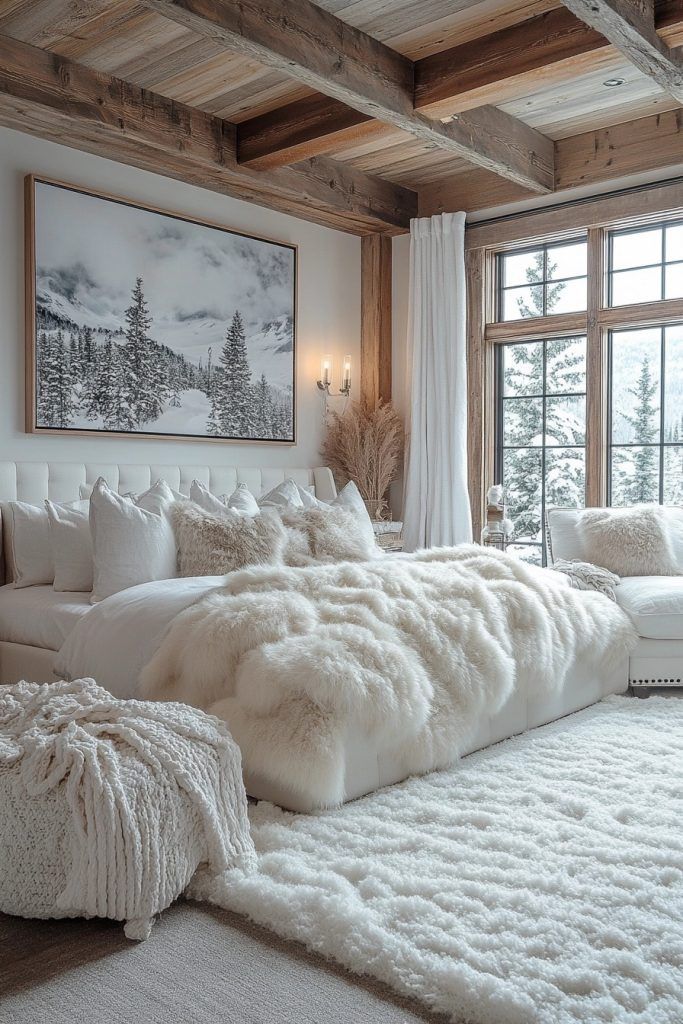
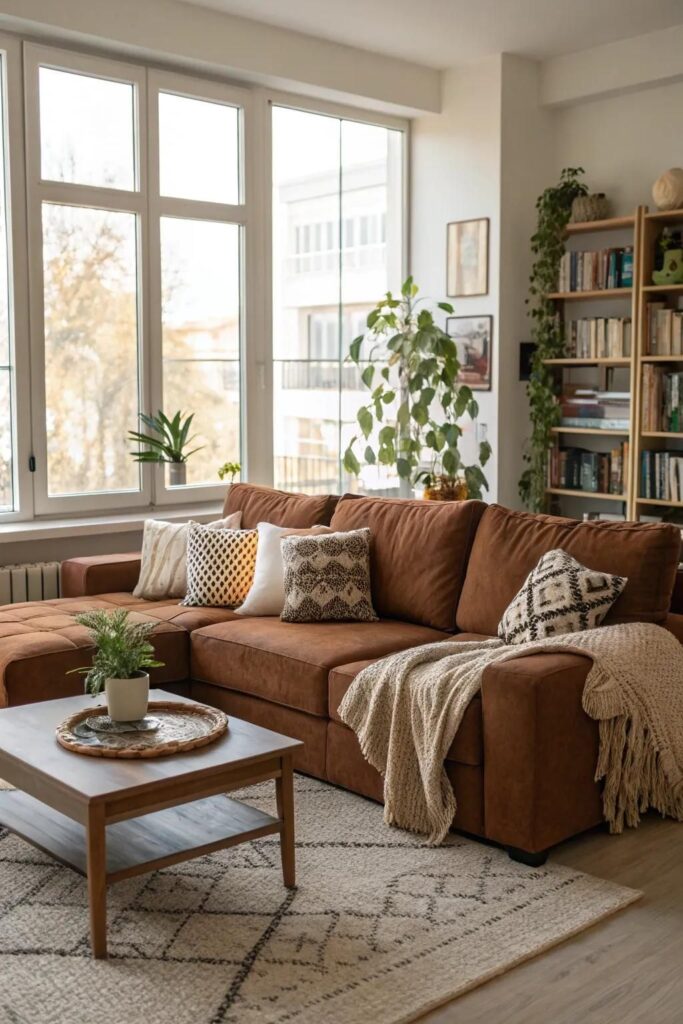
Incorporating Seasonal Colors and Accents
Transform your living space throughout the year by strategically updating color palettes and textural elements. These changes create visual harmony with nature’s cycles while maintaining a cohesive design foundation.
Refresh with Seasonal Colors
Start with a neutral base palette for major furniture pieces and walls. This foundation allows you to layer seasonal colors through smaller elements without overwhelming your space.
Spring brings fresh pastels like soft greens, lavender, and pale yellows. These colors reflect new growth and lighter days ahead.
Summer calls for brighter, more vibrant hues. Consider coral, turquoise, or sunny yellows to capture the season’s energy.
Fall welcomes warm earthy tones like burnt orange, deep burgundy, and golden amber. These colors mirror autumn foliage and create cozy atmospheres.
Winter embraces cool tones such as icy blues, crisp whites, and deep forest greens. These shades complement shorter days and indoor gatherings.
Focus color changes on easily replaceable items like throw pillows, small rugs, and decorative objects. This approach keeps costs manageable while delivering maximum visual impact.
Mix and Match Textiles
Textiles offer the quickest way to introduce seasonal comfort and style. Layer different fabrics to create depth and visual interest throughout your rooms.
Throw pillows serve as your primary textile tool for seasonal updates. Switch cotton covers for linen in summer’s heat, then transition to velvet cushions for winter warmth.
Blankets provide both function and style during colder months. Drape plaid throws over sofas or chairs to add pattern and texture.
Change curtain panels seasonally when possible. Light, flowing fabrics work well in spring and summer, while heavier materials provide insulation during winter.
Mix textures within each season for added dimension. Combine smooth velvet with nubby wool, or pair crisp linen with soft cotton weaves.
Add Decorative Accents
Small decorative pieces create seasonal atmosphere without major furniture changes. Focus on items that can be easily stored when not in use.
Incorporate natural elements that reflect each season’s characteristics. Fresh flowers and plants work beautifully for spring and summer displays.
Pinecones, branches, and seasonal fruits make excellent fall accents. Winter calls for evergreen sprigs, white candles, and metallic elements.
Swap out decorative bowls, vases, and candlesticks in seasonal colors. These small changes create cohesive looks throughout your home.
Store off-season decorative items in labeled bins or baskets. This organization system makes seasonal transitions smoother and more efficient.
Rotate Artwork and Wall Decor
Wall decor significantly impacts your room’s seasonal feeling. Create a rotation system for artwork and prints that reflect different times of year.
Florals work perfectly for spring displays. Choose botanical prints or photography featuring blooming trees and garden scenes.
Summer artwork might showcase beach scenes, bright landscapes, or abstract pieces in vibrant colors that capture the season’s energy.
Fall pieces often feature harvest scenes, forest landscapes, or warm-toned abstract works that complement autumn’s earthy color palette.
Winter art can include snow scenes, evergreen forests, or minimalist pieces in cool tones that reflect the season’s quieter mood.
Consider creating a seasonal art library with pieces stored safely when not displayed. This approach allows you to completely refresh wall spaces throughout the year.

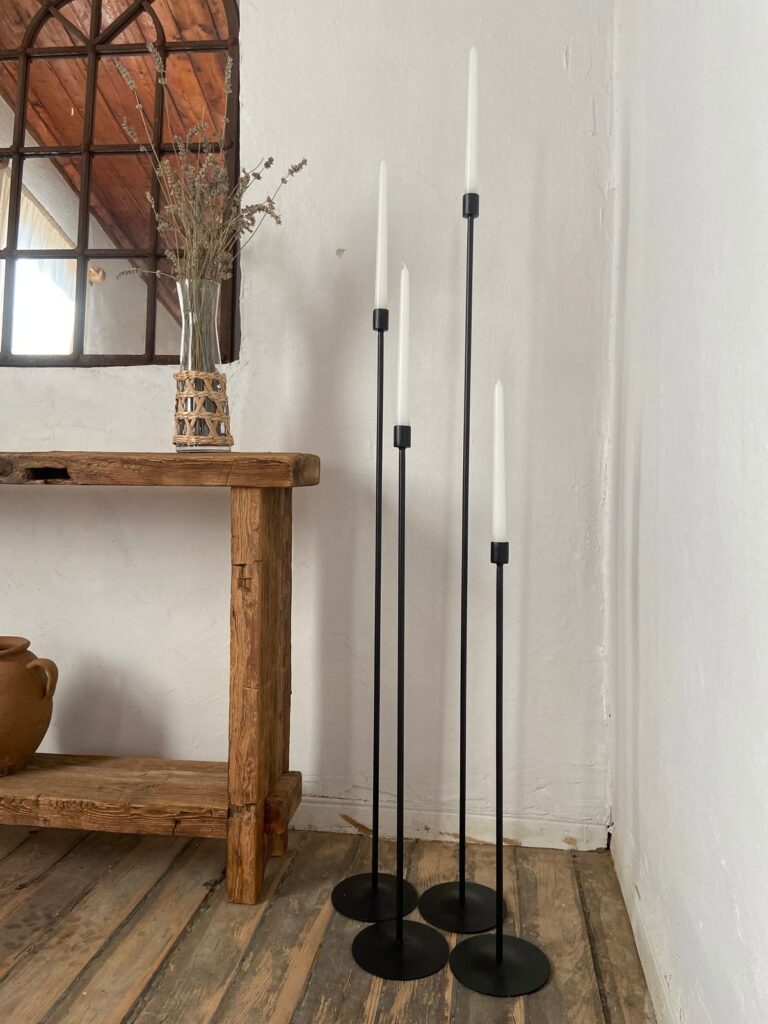
Textiles and Fabrics for Every Season
Switching your home textiles seasonally creates comfort while matching natural temperature changes. Light fabrics like cotton and linen work best in warm months, while wool and heavier materials provide insulation during colder seasons.
Switch Up Area Rugs and Curtains
Area rugs should change with the seasons to match both comfort needs and visual appeal. Summer calls for lightweight materials like cotton or jute that feel cool underfoot and allow air circulation.
Winter demands thicker wool rugs that provide insulation and warmth. These materials trap heat and create a cozy atmosphere when temperatures drop.
Curtains follow similar seasonal patterns. Lightweight cotton or linen panels work well in spring and summer, filtering light while maintaining airflow. These fabrics create a bright, airy feeling that complements warmer weather.
Heavy curtains made from wool or thick cotton blends serve winter months better. They block drafts and provide additional insulation for windows. Dark colors also absorb and retain heat during cold periods.
Consider storing off-season window treatments in vacuum-sealed bags. This rotation system keeps fabrics fresh while maximizing storage space.
Transition Throw Pillows and Blankets
Throw pillows offer the easiest way to change your seasonal decor without major expense. Lightweight cotton covers work perfectly for spring and summer months, providing breathability and easy washing.
Switch to velvet, wool, or heavier cotton blends when temperatures drop. These materials add visual warmth and physical comfort during cooler seasons.
Wool throws become essential winter accessories. They regulate body temperature naturally while adding texture and color to your space. Store summer throws in cedar chests or closets during off-seasons.
Layer different textures for visual interest. Combine smooth cotton with nubby wool or add linen accents to create depth. Keep neutral base colors and change accent pieces seasonally.
Wash pillow covers monthly and store seasonal options in labeled bins. This system keeps fabrics clean and organized for easy transitions.
Select Seasonal Bedding and Table Linens
Bedding changes significantly impact sleep comfort throughout the year. Cotton sheets work well year-round, but weight matters. Percale weaves provide cooling airflow for summer nights.
Flannel or jersey knit sheets offer warmth during winter months. These materials trap body heat while remaining soft against skin. Add wool blankets for extra insulation on coldest nights.
Linen bedding excels in hot weather due to its loose weave and moisture-wicking properties. It becomes softer with each wash and maintains a relaxed, casual appearance.
Table linens follow seasonal entertaining needs. Light cotton or linen tablecloths suit outdoor dining and casual summer meals. These fabrics resist stains and wash easily after outdoor use.
Heavier fabrics like wool blends or thick cotton work better for formal winter dining. They drape elegantly and provide protection for dining tables during holiday entertaining.
Store seasonal bedding sets together in labeled containers. Include matching pillowcases and accent pieces to simplify future changes.
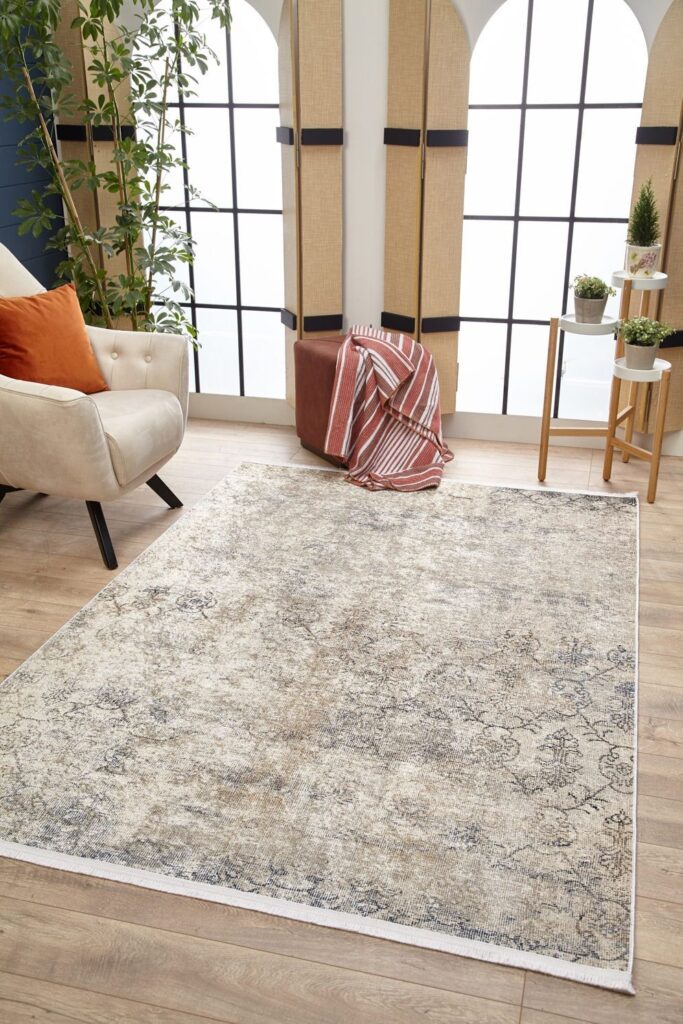
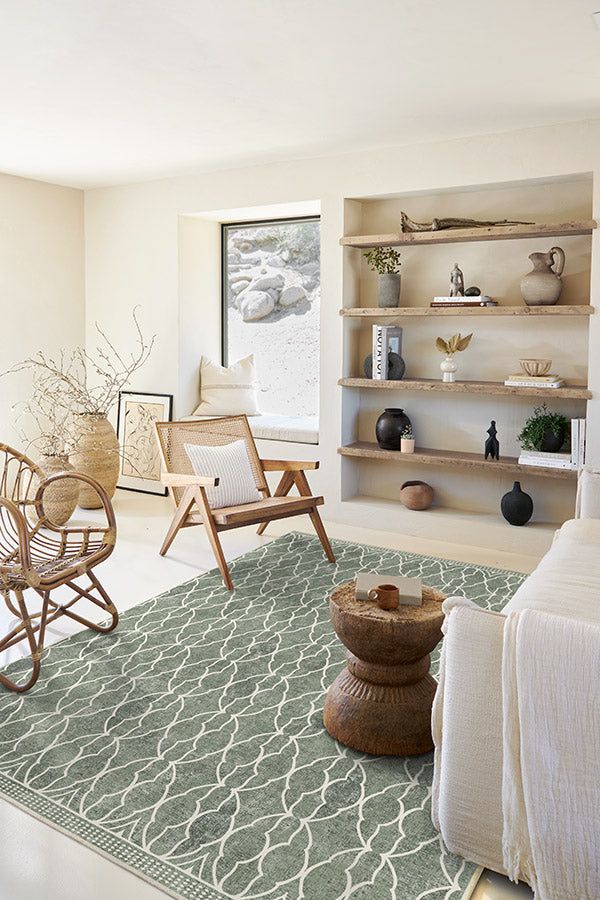
Decorating with Natural Elements and Scents
Natural elements and seasonal scents create authentic connections to each season while transforming your home’s atmosphere. Fresh botanicals, collected natural finds, and carefully chosen aromas work together to establish distinct seasonal moods throughout the year.
Incorporate Seasonal Botanicals
Fresh florals anchor your seasonal decor with vibrant color and natural beauty. Tulips bring spring energy to entryways and dining tables, while sunflowers create cheerful summer displays in living areas.
Pumpkins serve multiple decorative purposes beyond traditional fall arrangements. Small varieties work as table centerpieces, while larger ones create stunning porch displays. You can paint them in unexpected colors or leave them natural for rustic charm.
Living plants offer year-round flexibility for seasonal transitions. Potted mums deliver autumn colors, while evergreen arrangements provide winter structure. Spring bulbs in decorative containers herald warmer weather.
Seasonal rotation keeps botanicals fresh:
- Spring: Daffodils, cherry blossoms, fresh herbs
- Summer: Hydrangeas, lavender, herb gardens
- Fall: Chrysanthemums, ornamental grasses, branches
- Winter: Evergreens, white flowers, bare branches
Use Decorative Natural Finds
Pinecones transform simple spaces into seasonal showcases. Fill glass bowls with them for coffee table displays, or spray paint them metallic for elegant winter arrangements. Large pinecones work as standalone accent pieces on mantels.
Coastal elements bring relaxed seasonal vibes indoors. Seashells in clear vases capture summer memories, while driftwood pieces become sculptural focal points. These elements work particularly well in bathrooms and bedrooms.
Natural finds by season create authentic displays:
| Season | Natural Elements | Display Ideas |
|---|---|---|
| Spring | Smooth stones, bird nests | Shallow bowls, shelf styling |
| Summer | Shells, coral, sea glass | Glass containers, bathroom accents |
| Fall | Acorns, colorful leaves | Scattered on tables, framed |
| Winter | Bare branches, pine boughs | Tall vases, garland making |
Introduce Seasonal Scents
Candles provide the easiest way to introduce seasonal aromas throughout your home. Choose scents that match your natural elements – pine candles complement evergreen displays, while citrus scents pair with summer botanicals.
Layer scents strategically across different rooms. Light florals work in bedrooms, while stronger scents like cinnamon suit common areas. Avoid competing fragrances in open floor plans.
Essential oil diffusers offer chemical-free alternatives to synthetic candles. Blend oils to create custom seasonal combinations – lavender and eucalyptus for spring, or cedar and orange for fall.
Natural scent sources integrate seamlessly with your decor. Fresh herbs like rosemary double as aromatic elements and visual interest. Potpourri made from dried flowers extends their decorative life while maintaining fragrance.
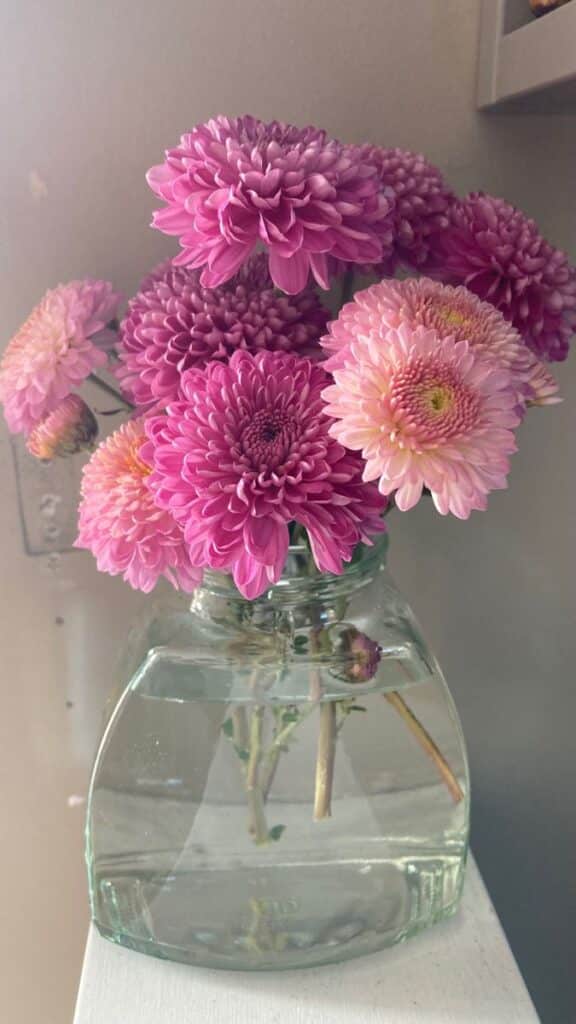
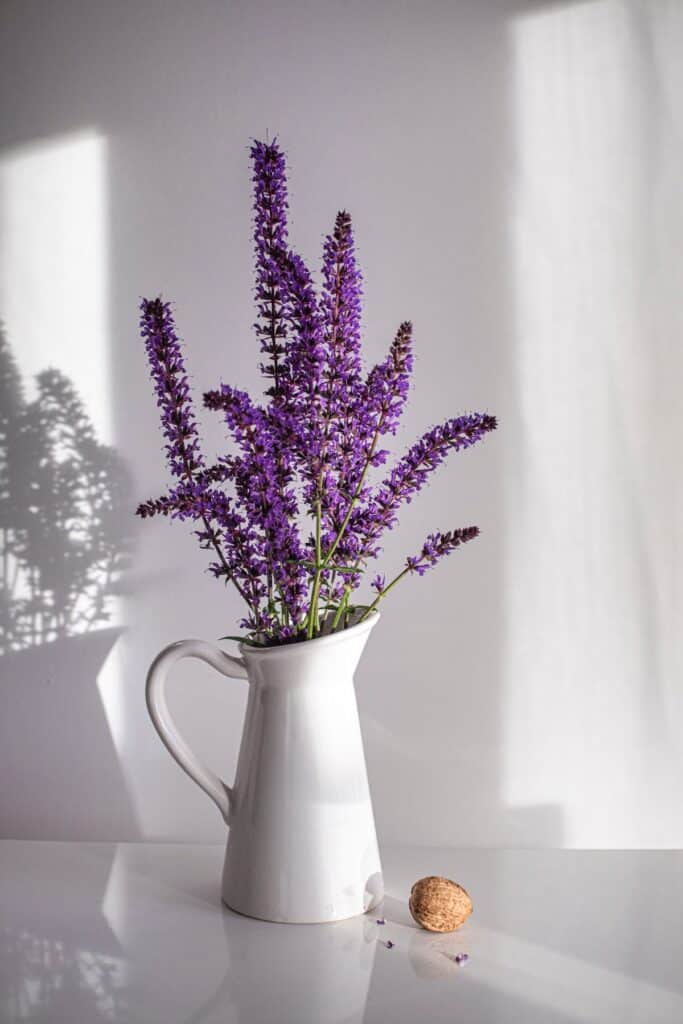
Seasonal Transitions and Storage Solutions
Effective storage systems and organized transitions make switching between seasonal themes effortless while maintaining clean outdoor spaces throughout the year. Strategic planning reduces clutter and ensures your holiday decor stays in pristine condition.
Simplify Seasonal Transitions
Create a categorized storage system by sorting items into four main seasonal groups: spring, summer, fall, and winter. Label each container clearly with both the season and specific holidays like Halloween or Christmas.
Store frequently swapped items in easily accessible bins near your main living areas. Keep basic transition pieces like neutral throw pillows and versatile candles in a designated “year-round” container.
Quick Transition Checklist:
- Pack away previous season’s items immediately
- Clean and inspect items before storage
- Take photos of arrangements for easy recreation
- Keep a master inventory list
Use clear plastic bins for small holiday decor items so you can identify contents without opening containers. Store heavier seasonal items like wreaths and garlands in sturdy boxes with proper cushioning.
Plan your transitions two weeks before each season begins. This timeline allows you to gradually shift your decor without rushing through the process.
Smart Storage for Decor Items
Invest in specialized storage solutions designed for different types of seasonal items. Ornament storage boxes with individual compartments prevent breakage, while wreath storage bags maintain shape and prevent dust accumulation.
Store string lights by wrapping them around cardboard pieces or using dedicated light storage reels. This prevents tangling and extends the life of your lights significantly.
Storage Solutions by Item Type:
| Item | Best Storage Method | Key Benefits |
|---|---|---|
| Ornaments | Divided boxes with padding | Prevents breakage |
| String lights | Cord reels or cardboard wraps | Eliminates tangling |
| Garlands | Large flat boxes | Maintains shape |
| Wreaths | Circular storage bags | Dust protection |
Choose storage locations based on accessibility and climate control. Attics and basements work well for items used once yearly, while frequently rotated pieces should stay in closets or under beds.
Refresh Outdoor Spaces
Transition your outdoor spaces by swapping seasonal planters and updating entrance decorations. Store off-season outdoor cushions and umbrellas in weather-resistant containers or designated garage space.
Change string lights from warm white in winter to colorful options for spring and summer celebrations. Store outdoor holiday decor in waterproof bins to prevent weather damage during off-seasons.
Create dedicated zones in your storage area for indoor versus outdoor seasonal items. Outdoor decorations require more robust protection against temperature fluctuations and moisture.
Outdoor Storage Tips:
- Use weatherproof bins for all exterior items
- Clean outdoor decor before storing
- Check for wear and damage seasonally
- Store umbrellas and furniture covers together
Rotate outdoor furniture arrangements with each season change. Move heavy pieces to protected areas during harsh weather months and bring lighter accent pieces indoors for safekeeping.
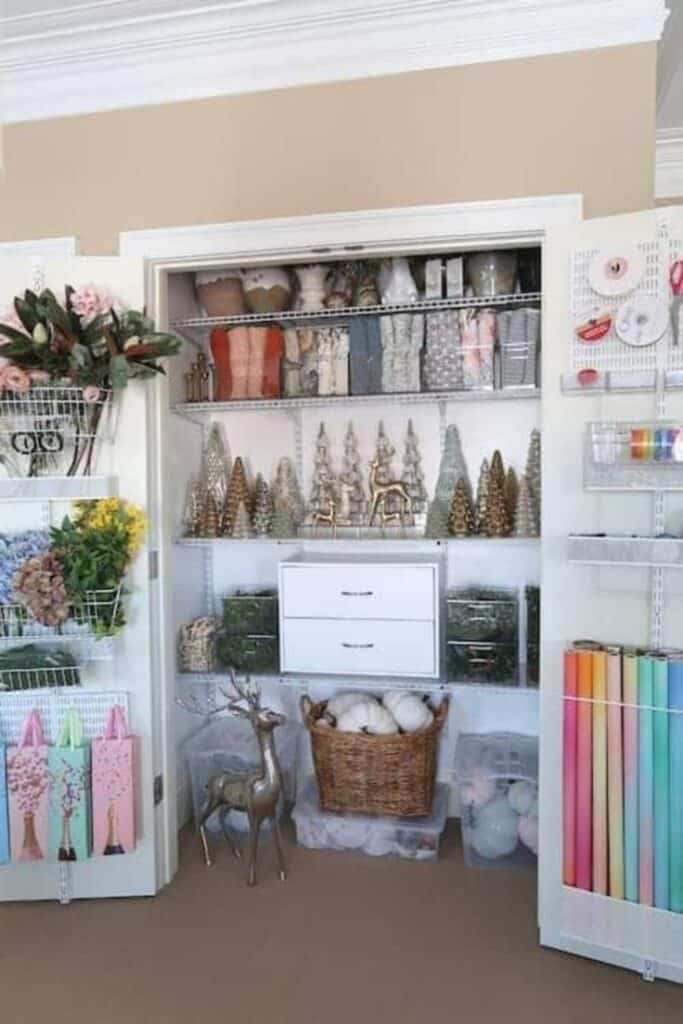
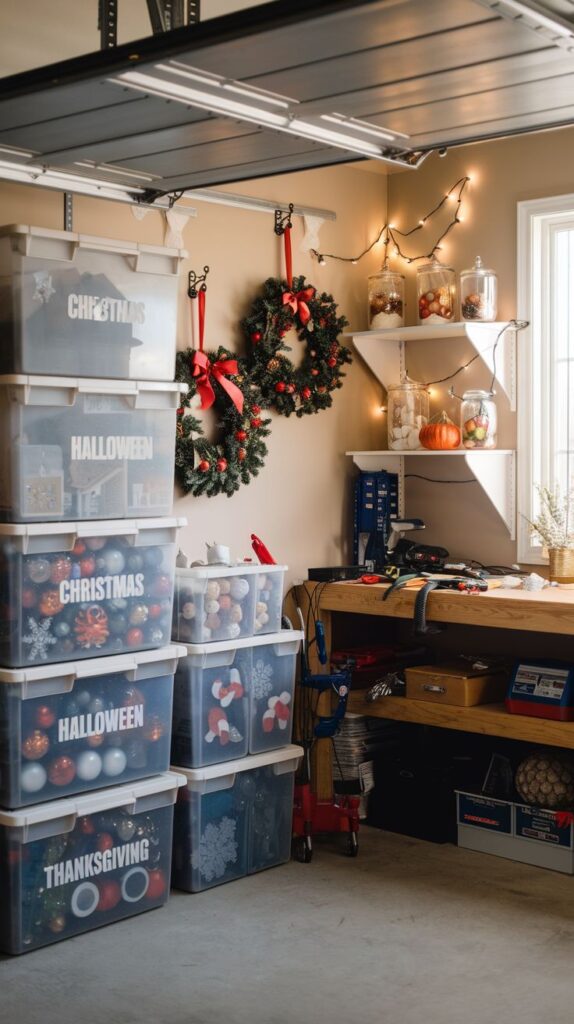
Styling Each Room and Creating Inviting Spaces
Transform your home into a welcoming sanctuary by focusing on key areas that make the biggest impact. Smart updates to entryways, reading spaces, and lighting create seasonal flow throughout your living environment.
Update Entryway for Each Season
Your entryway sets the tone for your entire home and deserves seasonal attention. Spring calls for fresh greenery, light-colored welcome mats, and potted plants that signal renewal.
Switch to summer with bright coastal colors, lightweight baskets for storage, and perhaps a small bench with colorful cushions. Add seasonal flowers in weather-resistant containers.
Fall transforms your entrance with warm amber lighting, rustic elements like wooden signs, and decorative gourds or pumpkins. Layer different textures through woven baskets and cozy throws.
Winter brings opportunities for evergreen arrangements, metallic accents, and string lights that create warmth. Consider a seasonal wreath and winter-themed door mat.
Keep functional elements consistent while swapping decorative pieces. Store off-season items in labeled bins for easy rotation.
Set Up a Seasonal Reading Nook
A dedicated reading nook becomes a focal point that adapts beautifully to seasonal changes. Choose a corner with natural light and comfortable seating as your foundation.
Layer seasonal textiles to transform the space quickly. Spring brings lightweight cotton throws in pastels, while summer calls for linen fabrics in bright whites or blues.
Fall reading nooks benefit from rich burgundy or orange cushions paired with wool blankets. Winter requires the coziest approach with faux fur throws and deep jewel-toned pillows.
Soft lighting proves essential year-round. Add a table lamp with adjustable brightness, string lights, or candles to create ambiance during shorter days.
Include seasonal books, a small side table for beverages, and perhaps a basket for storing current reading materials.
Enhance with Mirrors and Lighting Dynamics
Mirrors amplify natural light and make spaces feel larger while reflecting your seasonal décor throughout the room. Position mirrors opposite windows to maximize daylight during darker months.
Use lighting layers to adapt your spaces seasonally. Bright overhead lighting works for spring cleaning and summer activities, while dimmer warm lighting suits fall and winter evenings.
Seasonal accents around mirrors change the entire room’s feeling. Add garlands during holidays, fresh branches in spring, or string lights for winter warmth.
Consider multiple light sources at different heights. Floor lamps, table lamps, and wall sconces create flexible lighting options that adapt to seasonal needs and activities.
Swap bulb temperatures seasonally – cooler daylight bulbs for spring and summer, warmer tones for fall and winter months.
- 0shares
- Facebook0
- Pinterest0
- Twitter0
- Reddit0



